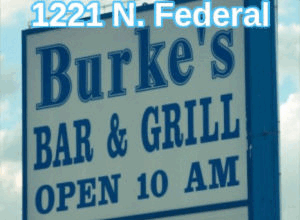
The following is a legislative update from Republican State Rep. Shannon Latham, representing portions of Franklin, Hamilton, Story and Wright counties in Iowa House District 55:
Subcommittees Get Underway during Week 2 of Session
The second week of the 2022 legislative session was filled with subcommittee meetings. Below is a brief summary of a few that are of interest to residents of House District 55.
HSB 13 – Ransomware and penalties
Cybercrimes are on the rise, which brought awareness that Iowa currently doesn’t have a law about using ransomware. This bill makes it a crime to use ransomware for the intent of accessing all or parts of a computer network, computer system, or computer database. This week I served on a subcommittee with Rep. Devon Woods (chair) and Rep. Ruth Ann Gaines for HSB 13. Our subcommittee recommended passage, so HSB 13 will be reviewed next by the full Economic Growth & Technology Committee.

HF 13 – Rural Emergency Hospitals
The post-COVID environment is especially challenging for hospitals due to supply chain issues, inflation of goods and wages, as well as staffing shortages. This bill will allow smaller hospitals that do not have or need to have inpatient services to offer their community much-needed emergency services and ambulatory services that only a rural emergency hospital (REH) could offer. It will allow some of Iowa’s struggling Iowa Critical Access Hospitals (CAH) to continue serving their communities, and the ripple effect will allow some intermediate hospitals to become CAHs.

HSB 1 – Educational Savings Accounts (ESAs)
The Iowa House held a public hearing Jan. 17 on the Governor’s ESA Bill (HSB 1). This bill passed out of subcommittee and committee, so it will be eligible for floor debate the week of Jan. 23. An amendment, which has been agreed to with the Senate, will extend operational sharing through 2034.
Key differences from the bill Gov. Reynolds proposed last session include:
Education Savings Accounts will become available to all Iowa students throughout the next three years. The State would contribute $7,598 to an ESA for students attending private schools.
Students who leave public school to attend private school with an ESA will be counted in the public school’s total. This means $1,205 per student attending a private school in the district would be allocated to the public school.
Also new in this year’s proposal is increased flexibility for how school districts can spend their money. Right now the State earmarks school districts’ budgets for specific programs, and some of those dollars go unspent. The Governor’s proposal will allow school districts to use these unspent funds for teacher bonuses.
Some Iowans have rightfully expressed concerns about the cost of HSB 1. House Republicans have a reputation for being very cautious when it comes to the state budget. The projected cost of this program is $341 million – or 4% of the state’s annual budget – when fully implemented in FY 29. In that same year, the state is projected to spend $3.9 BILLION on public education. Given current projections for that same year, the state will have a $3.1 BILLION ending balance and $3.7 BILLION in the Taxpayer Relief Fund.


I welcome visits from constituents at the statehouse. Wednesday was Veterans Day on the Hill where I enjoyed meeting with veteran Adam Akers, who serves as director of Franklin County Veterans Affairs. I also enjoyed meeting Chris Oliver, a veteran services officer from Wright County.”









